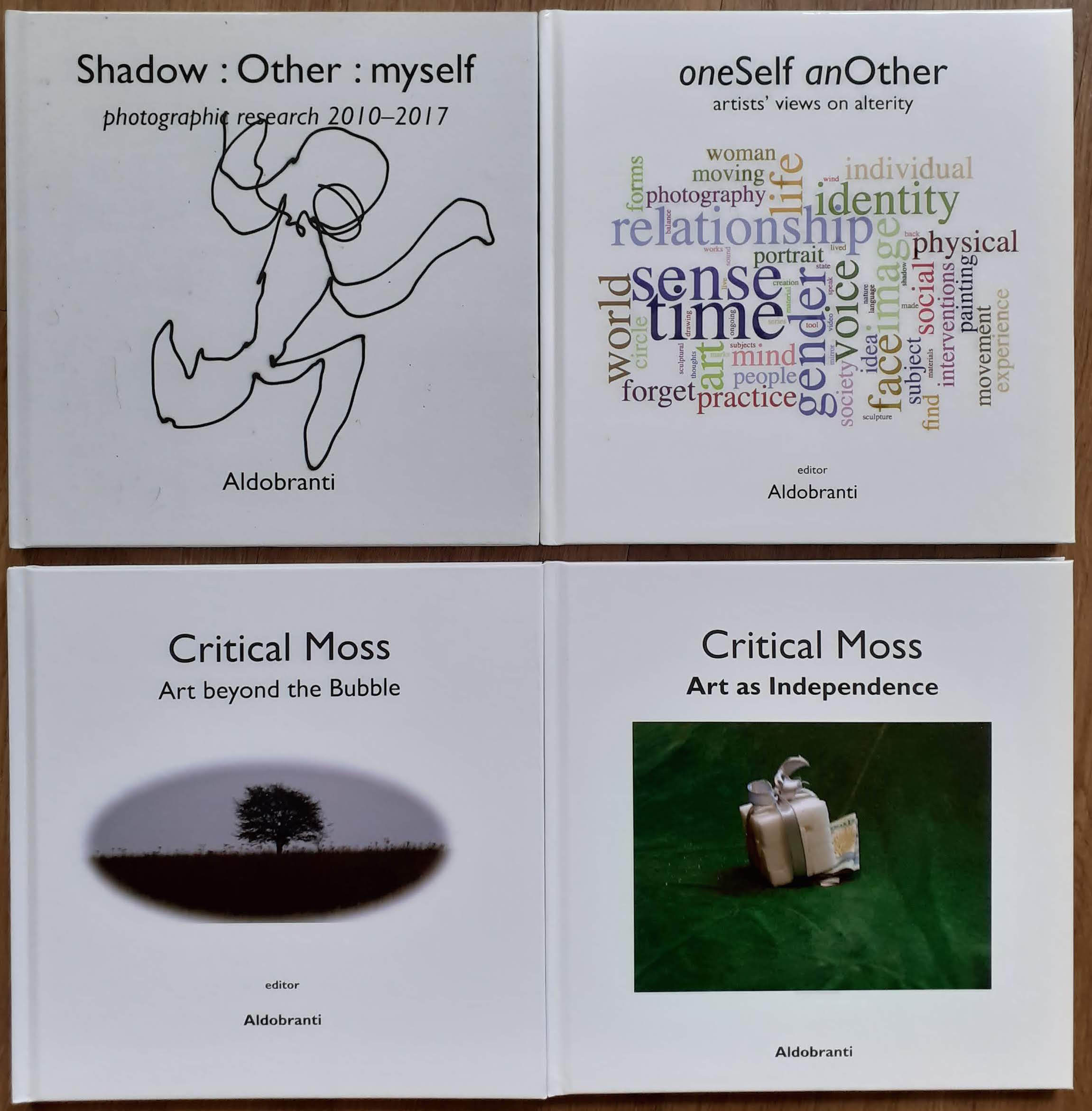
Towards the end of 2017 I saw a call for a photo book competition with a particular emphasis on research and identifying strongly with this job-description I began work on the text eventually published as Shadow:Other:myself. (photographic research 2010-2017)'
Two revelations: that the printed book is an art form of itself, widely appreciated, and that it could form part of a research method towards my interests.

The closing remarks of this first book had seemed to wind down a curtain on my research into Shadow but I had also opened up the intersubjective as a whole fresh topic. In order to see how artists were approaching this area I offered to showcase their work in a collection, the book 'oneSelf anOther (artists views of alterity)'. To add value to the contributing artists in addition to each receiving free copies, I upscaled the publishing operation as edizioni Fosco Fornio and issued each publication with an ISBN and undertook to make deposits with the British Library and equivalent operations in the devolved countries of the UK.
One result of interaction with these artists was some work on the play between the Self and the presentation made in public.
In the autumn of 2018 I had been to a presentation run by a 'local' ( a 40 mile drive each way) artist led organisation which promised to offer survival advice, even to 'thrive' for artists. I did not believe that the recipes offered would be successful in a rural setting at such distances from other like minds. The problem seems more acute where the artwork has a more diffuse conceptual base; artists who can produce a product that can be carried out of a shop or gallery, painters and sculptors for example can get the encouragement of a product sale. Thinking that some critical mass of artists should be necessary, I made an international call for artists to discuss the problems of an isolated practice, and found nearly 100 respondents whose words were published as 'Critical Moss: Art beyond the Bubble'. The title Critical Moss is a riff on the notions of critical mass, of rolling stones and the inexorable growth of moss in the damp of a British winter.
At the same time I was making work in response to the sense of separation from other artists e.g. The White Cube
The many common themes brought by these respondents triggered a lot of research into the sociology and value schemes of that place commonly called the Art World, or in the terminology introduced by Bourdieu, the Art Field. The publication of'Critical Moss: Art as Independence' pushes the point that globalisation is driving the triumph of economic capital over any remaining thought that art can continue to be ‘for art’s sake’. Under these conditions an individual self-identifying as an artist might choose to disengage in varying degrees from the market values of that world, or to avoid the solipsistic attitudes seen there, or in the final analysis to go ‘off-grid’ in a decisive step beyond the art scene.
This process has been valuable on many fronts: I have been able to build networks, to encourage other artists in their development and to help publicise them. I have learnt much more establishing the publisher' brand through developing a house style.
in previous years...